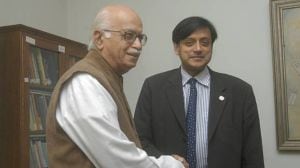Out to kill print media, here’s one geek who ended up embracing it
A funny thing happened while Halsey Minor was trying to kill print journalism. He ended up publishing magazines...

A funny thing happened while Halsey Minor was trying to kill print journalism. He ended up publishing magazines — big, heavy magazines, with beautiful pictures on quality paper — the kind he and others had declared obsolete. The founder of the technology news site CNet.com readily admits to an about-face. “I spent my time at CNet talking about how print was going to be challenged by the Internet and how we were going to make magazines go away,” he said. “Two years ago I realised I was still reading over 100 magazines a month. I like holding them and turning the pages. And the images are better than on the Internet.”
Amid the YouTube-fuelled craze for user-generated content, he wondered why readers, instead of writers and editors whom he would have to pay, could not do most of the heavy lifting. He also pondered how he might get rid of, or at least reduce, the large ad sales staff. Then in 2006 he met Paul Cloutier and Derek Powazek, Web-publishing veterans who had started a user-generated on-demand photo magazine called JPG. It took e-mail submissions and used a self-publishing service to sell downloads or print copies. They wanted to expand. Minor, who has backed a number of successful ventures since CNet — including Salesforce.com which went public and Grand Central which was sold to Google — had money to invest. A few weeks later, 8020 Publishing was born. It was named after the proverbial ratio of passive Web users (sometimes called lurkers) to those who actually write and contribute.
“You can be an ‘expert’, but the collective way is much richer and deeper that it’s almost impossible to compete with,” explained Minor. He is not the only one using user-generated content to make money. Many Web sites, like YouTube or Yelp thrive on content that users donate. The Al Gore venture CurrentTV is a cable channel devoted to videos submitted by the general public. Google recently filed a patent for user-generated content publications. But 8020 is different as Minor thinks he can make money from old-fashioned print.
Online readers vote on their favourite submissions appearing at JPGmag.com. Then a staff of 10 designs a layout for the winners and about 50,000 high-quality magazines are printed six times a year. They are sold through $25 annual subscriptions and on newsstands for $6 each. The online version is free. Readers can download and print a PDF file of the entire magazine as the publishers assume that physically holding a magazine is more satisfying than viewing it online. Even with that freebie, Minor says 70 per cent of his magazines on news stands are purchased, a surprisingly high “sell-through” rate; most magazine publishers would be thrilled with 50 per cent. Minor and company are so happy with the business model that they have produced a second user-generated magazine called Everywhere, devoted to travel.
“You’re going to see more of this,” said University of Mississippi journalism department chairman Samir Husni, who writes the business blog Mrmagazine.com. “I don’t think it’s just about getting cheap content into a magazine. Seeing their own work in print makes people feel like part of a community.” Users can submit photos, writing and travel recommendations to Everywhere and comment on everything. 8020 tries to make the magazine more readable by limiting advertising. The dozen or so advertisers in the print issues are limited to the first few pages, the back, and sponsorships of special sections.
Minor and the 8020 staff are kicking around ideas for the next magazine. He said he was in the venture for the long haul. “We should be able to build a large media company based on people publishing for themselves.”



- 01
- 02
- 03
- 04
- 05




























